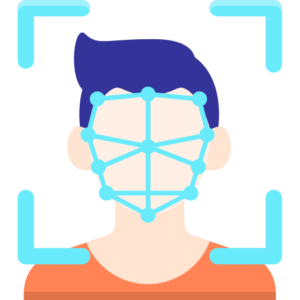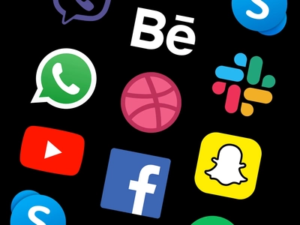Data Science and Machine Learning Internship ...
- 22k Enrolled Learners
- Weekend/Weekday
- Live Class
Welcome to a world where artificial intelligence is not a futuristic concept, but a reality intertwined with our daily lives! In this blog, we delve into the fascinating sphere of AI and its practical implications, showcasing how this revolutionary technology has quietly permeated the fabric of our existence. From waking up to a smart alarm that monitors our sleep cycles, to relying on voice assistants like Siri and Alexa for weather updates or recipe recommendations, AI’s presence is ubiquitous. This blog will show you the Top 8 artificial intelligence examples. It is the hidden force behind personalized movie recommendations on Netflix, and the intuitive prediction text while we compose emails or messages.
Here is the list of the top 8 artificial intelligence examples you’re likely to come across daily.

Maps And Navigations
Traffic predictions: AI can be utilized for predicting traffic conditions, assisting users in selecting the most direct route to their destination. For instance, Google Maps makes use of AI to predict traffic and, in the event of high traffic, to provide alternate routes.
Place recommendations: Using the user’s interests and preferences, AI can suggest places to visit. For instance, Yelp makes restaurant recommendations to consumers based on their prior ratings and reviews.
Personalized Navigation: AI can be used to personalize navigation by taking the user’s preferences and routines into consideration. In order to advise the optimal route to the user’s destination, Google Maps, for instance, can learn the user’s preferred routes and traffic patterns.
Improved Accuracy: By discovering and fixing faults, AI can be used to make maps and navigation more accurate. Google Maps, as an example, employs AI to find and fix problems in its maps, such as wrong route names or missing businesses.
Making navigation easier to use: People with disabilities can utilize AI to make navigation more accessible. The accessibility features offered by Google Maps, for instance, include voice navigation and a screen reader mode.
Elevate your expertise in AI! Enroll in our Generative AI Training. Cultivate skills to shape AI outputs and fuel innovation. Don’t miss out — kickstart your journey today!
Lets checkout the other Artificial Intelligence Examples for facial detection and recognition.

Detection and Recognition: By examining particular patterns or traits, AI algorithms can be trained to recognise faces in an image or video. For instance, Facebook’s DeepFace algorithm is comparable to human performance in that it can identify people’ faces in photographs with 97.35% accuracy.
Expression Recognition: AI systems are also capable of analyzing facial expressions to recognise emotions. This is helpful for customer experience management, as companies monitor client responses. In Apple’s Animoji feature, for instance, emotion detection is used to animate emojis in real-time based on the users’ expressions.
Biometric authentication: Facial recognition with AI capabilities is frequently used to grant users safe access to objects or locations. For instance, Apple’s FaceID uses an advanced neural network to securely identify users’ faces and offers convenient, password-free access to iPhones.
Security and surveillance: To prevent and detect crime, law enforcement agencies use AI-based facial recognition. In busy public places, the technology can recognise people, and it can also compare faces in surveillance footage to criminal databases. For instance, by comparing photographs from social media with those in a police database in 2020, AI facial recognition enabled the arrest of a child predator in Pennsylvania.
To Accelerate your journey into Machine Learning! Enroll in our Machine Learning Crash Course for Beginners and unlock the secrets of ML. Start your learning adventure today and become a machine learning whiz! website.
Lets move to the other segment of Artificial Intelligence Examples for Search Engine Recommendation Algorithms.

Personalization: To provide personalized recommendations, AI analyzes a user’s search history, click behavior, and time spent on various pages using machine learning algorithms. For instance, if a user frequently searches for “vegan recipes,” the search engine may suggest new plant-based cookbooks or vegan culinary blogs using AI.
Semantic Analysis: Natural Language Processing (NLP), a branch of AI, enables search engines to comprehend a user’s query’s context and intent in addition to its terms. If a user searches for “Apple,” they can be referring to the fruit or the IT corporation, for instance. Based on the user’s prior interactions and additional searched terms, AI assists in deciphering this.
Content Quality Assessment : AI algorithms are used to evaluate the quality of the material on websites. They take into account elements including the information’s relevance, site design, load time, and more. Users are more likely to recommend websites with good, useful information.
Image and Voice Recognition: Search engines’ capacity to recognise and understand images and voice instructions is improved by AI. AI is able to recognise monuments from user-uploaded images and deliver pertinent information. Similar to this, when someone uses voice search to “Find Italian restaurants near me,” AI analyzes the request and provides appropriate suggestions.
Lets explore the other Artificial Intelligence Examples for Text Editors or Autocorrects.

Spell Check and Grammar Correction : The most fundamental use of AI in text editing is spell check and grammar correction. AI algorithms have the ability to identify and fix grammatical faults, punctuation mistakes, artistic issues, and incorrect spelling by comparing the input text with a specified vocabulary and grammar rules. For instance, programmes like Grammarly make use of AI to propose changes to writing style in addition to correcting grammatical faults.
Autocomplete: Using the user’s writing style and the context, AI algorithms may anticipate the next word a user will type. For instance, Google’s Smart Compose tool in Gmail makes sentence completion suggestions using machine learning, saving time and effort when typing.
Contextual Understanding: More advanced artificial intelligence (AI) systems are able to recognise the context in which words and phrases are used, which results in more precise corrections and recommendations. This is especially helpful for avoiding unpleasant autocorrect errors brought on by a lack of contextual awareness. For instance, Microsoft’s Editor makes use of AI to better comprehend the context of your writing and make suggestions in line with it.
Text formatting and layout: AI is capable of analyzing and interpreting the structure of a document, as well as suggesting or automatically implementing formatting and layout modifications to enhance readability and structure.
Lets explore the other Artificial Intelligence Examples for Digital or Virtual Assistants.
AI is offering personalized learning experiences, automating administrative tasks, and enhancing educational content for students. Artificial Intelligence is adopting how to teach in a better way to students & professors. Most of the startup companies started implementing AI learning for their employees. To know more enroll in our AI For Startup certification course today!

Understanding User Requests: Natural Language Processing (NLP), a category of AI that enables digital assistants to understand and deal with user input in natural language, is made possible. For instance, Siri understands the context of a question like “What’s the weather like today?” and responds with appropriate information. This comprehension of human language would not be possible without AI.
Learning from Interactions: AI algorithms learn from repeated interactions to gradually deliver better and more personalized responses. For example, Alexa from Amazon learns your voice patterns, vocabulary, and preferences over time, steadily enhancing its capacity to fulfil your requests accurately.
Predictive capabilities: By using previous data and usage patterns, AI helps digital assistants to anticipate user demands. On the basis of your calendar entries and current traffic information, Google Assistant, for instance, can advise leaving early for an appointment if there is heavy traffic.
Large Language Models are known as advanced AI. Based on user input commands/prompts LLM will generate human-like text. LLM is doing various activities including language translation, text generation, summarization, etc. To know more enroll in our LLM engineering course today!
Task Automation: AI enables digital assistants to carry out repetitive chores automatically. You may ask Siri to make calls, send messages, or set alarms. Similarly, business-focused virtual assistants can manage emails, plan meetings, or update CRM data, saving you time and money.
Lets explore the next Artificial Intelligence Examples for Social Media.

Personalized User Experiences: AI assists in customizing and improving the user experience by analyzing user behavior and online interaction patterns. For instance, Netflix evaluates user preferences and offers specialized programme recommendations using AI algorithms. Enrolling in our AI for Designers Course, you will learn how AI is used in UI/UX design to create the better user experience.
Chatbots and Customer Support: AI-powered chatbots provide round-the-clock customer service, promptly answering questions and assisting consumers. Businesses can create chatbots that can instantly respond to client inquiries or deliver information, for instance, using Facebook Messenger.
Content Creation and Curation: By creating content based on user preferences, AI systems can greatly increase engagement. For instance, based on prior likes, shares, and other interactions, Facebook and Instagram employ AI to generate personalised content for each user’s feed.
Ad targeting: AI enables companies to more precisely target potential clients. AI can forecast consumer wants and offer highly relevant adverts by examining data points like browsing history, purchasing behavior, and demographic information. For instance, Google adverts makes use of AI to present people with appropriate adverts based on their online activity and search history.

Fraud detection: AI algorithms are used to identify suspected fraud and identify unusual behavior. They examine transaction data from the past to discover trends and spot mistakes. For example, AI can detect and issue an alert when a card is used outside the user’s typical transaction locations, thereby aiding in the prevention of fraudulent transactions.
Risk evaluation: AI may examine a user’s spending habits to determine credit risk. This can be especially useful in peer-to-peer lending platforms when figuring out someone’s creditworthiness is important. AI, for instance, may compute risk scores by looking at transaction history, repayment habits, and other behavioral data, enabling well-informed lending decisions.
Personalized Services: Recommendation engines enabled by AI can examine a user’s spending patterns and preferences to make relevant service or offer suggestions. A user may receive recommendations for dining offers or reward programes from the e-payment platform if they frequently use their card for dining.
Optimized Transaction Processes: Based on past data, AI can also suggest the appropriate payment gateway to guarantee successful transaction processing. As a result, the chance of transaction approvals increases, leading to an overall improvement in the customer experience.
Lets explore the next Artificial Intelligence Examples for Entertainment Streaming Apps.

Personalized Recommendations: AI systems analyze user behavior, viewing history, and preferences to make personalized content recommendations. Netflix, for instance, utilizes AI to suggest episodes and films you might like based on your prior viewing preferences. According to reports, Netflix’s recommendation system accounts for almost 80% of the viewed content on the service.
Improved Search: AI can improve the usability and effectiveness of content search. It can comprehend natural language requests, process them, and even interpret mistakes or misspellings. Users can search for videos on YouTube using conversational or vague language thanks to Google’s AI capabilities.
Automated Subtitling and Dubbing: AI is capable of producing subtitles and dubs in a variety of languages, opening up content to a larger audience. Streaming services like Amazon Prime Video utilize machine learning algorithms to automatically create subtitles, thereby expanding the audience for their content.
Content Production : AI is able to recognise trends and insights that support the creation and curation of content. Netflix, for example, uses big data and machine intelligence to determine which shows to make and which will be the most popular with its audience. To create your mobile app, Enroll in our Generative AI for Java developers course today!
Overall, AI has the potential to make our lives easier, safer, and more efficient As technology continues to advance, it’s clear that AI will remain an integral part of our life’s fabric, progressively influencing all sectors and fields. As we move forward, the challenge and opportunity lie in harnessing AI’s power ethically and responsibly to foster a world where technology serves as a tool to augment human potential, drive innovation, and elevate the quality of life. I hope now you are familiar with artificial intelligence examples which we use in our day to day life. Check out our Edureka website for more interesting and informative blogs regarding AI and other prominent technologies. And I will definitely suggest you take up an AI Certification Course to have a proper understanding of Artificial Intelligence and follow your career path in this exciting field.
Nowadays AI is making the world unimaginable Application. Which will be very useful for humans. AI applications like healthcare, finance, and entertainment, etc… are currently evolving in the world. Among these applications AI in design is creating excitement for us.Mid journey tool makes text format into image format. Enroll in our midjourney course for beginners today!
Also, Elevate your skills and unlock the future of technology with our Prompt Engineering Course Online! Dive into the world of creativity, innovation, and intelligence. Harness the power of algorithms to generate unique solutions. Don’t miss out on this opportunity to shape the future – enroll now and become a trailblazer in Generative AI. Your journey to cutting-edge proficiency begins here!
To minimize human error and increase work efficiency AI tools are implemented in every industry. For example, in the HR field, AI is helping by doing HR activities like resume screening, recruitment process, onboarding process, Payroll related works, etc. To know how to use AI tools in your sector enroll in our AI tools course today!